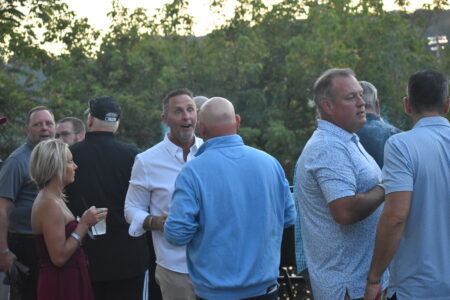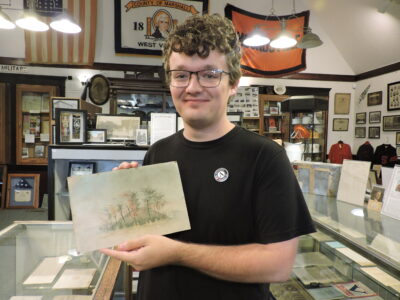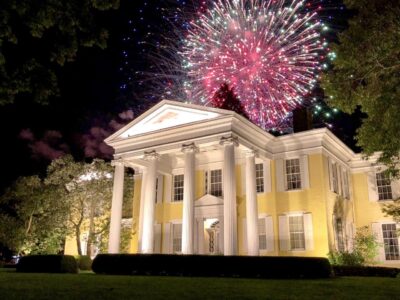Mansfield Area Entrepreneurs Put Heart Into Work
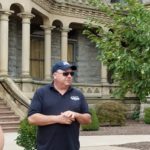
SMITH
Editor’s Note: The following is a result of my “Haunted and Hollywood” tour to Mansfield, Ohio, the story about which was published on the Oct. 2 Life cover. These good people of Mansfield were inspiring enough to deserve their own story. Special thanks to Jodie Snavely, media director at the Mansfield & Richland County Convention and Visitors Bureau, for the introduction.
By PHYLLIS R. SIGAL
Design Editor
“Remember, Red, hope is a good thing, maybe the best of things, and no good thing ever dies.” –Andy Dufresne
That line is one of many favorites from “The Shawshank Redemption,” the movie filmed in Mansfield, Ohio, and surrounding areas in Richland County, about 22 years ago. The area has prospered partly because of the film.
But, also because the good people of Richland County have taken that line to heart — a lot of their successes have been built on hope.
Their own inner passion and their sense of hope has made them, their projects and the towns prosper.
• Take Paul Smith for example. As director of the Mansfield Reformatory, he has headed up the plan to refurbish the site. It was slated to be torn down right after “Shawshank” finished filming, but a dozen people talked the state into saving it, he explained. The estimated cost to rehabilitate the structure was $60 million, when the prison closed in 1990.
The prison property is in its “fourth life” now, Smith said. First, it served as an encampment prior to the Civil War, then as a reformatory, next as a maximum security prison and now, it’s a tourism site.
“We’re really stepping on the gas now to create a museum,” he said.
He said that many people have brought back boxes and boxes of prison paraphernalia: door handles, mug shots, items made by prisoners, dishes, etc.
The 250,000-square-foot facility is privately funded, with income from the varied programs at the building such as the Relay for Life, Convention and Visitors Bureau annual meeting, Civil War events, Home and Garden Show, paranormal events and the Halloween haunt. “We’re always doing something new,” Smith said.
A little more than $5 million has gone into the restoration at this point, Smith said.
“It’s a labor of love.”
• Scott Schaut is another example of a man putting his heart and soul into a project.
Schaut is curator of the Mansfield Memorial Museum in the Solders and Sailors Memorial Building.
The building was closed by the state in 1955 and reopened in 1999. Schaut is only the second curator since 1889. Architecturally, the building hasn’t changed since it was built, he said.
He knows each and every artifact intimately and can talk for hours about them. There are thousands of eclectic collectibles, from military uniforms to stuffed animal displays; a 1953 clothes dryer that plays the tune “How Dry I Am” when the cycle is finished, a 1943 Tappan dishwasher and a 1953 microwave oven that weighs around 200 pounds; arrowheads, plant specimens and much more.
He has a dog tag maker that he restored, and he recently created a display of 600 miniature military planes and 400 tanks.
There are chairs that were purchased for the building in 1898. Out of the original 100 purchased, he has 98 of them.
One of the biggest draws to the museum is Elektro, a robot that was made and designed at the Mansfield Westinghouse Appliance Division in 1937 for the New York World’s Far of 1939-40.
The exhibit includes a copy of Herbert Televox from 1928, a copy of Elektro as he looked in 1939 and the original Elektro. There are also photos and artifacts related to the robots on display.
Schaut is a wellspring of knowledge about Mansfield. The word passionate doesn’t even begin to describe him.
“This is my life, literally,” Schaut said.
• John Fernyak and his wife loved carousels, and decided they wanted to do something for the city of Mansfield, explained Sharon Bishop, an employee at the carousel gift shop. The bank, however, thought it was a bad idea. That prompted the founding fathers to raise enough money themselves to buy the property and eventually build the carousel.
The area, now known as the Carrousel District, has come from blight to be a bustling area of town with shops and restaurants for residents and tourists to enjoy. Most of the buildings are now thriving with businesses, Bishop said, all thanks to Fernyak’s vision and dedication.
The carousel, now celebrating its 25th anniversary, is the first new, hand-carved wood carousel to be built in this country since the 1930s. The figures were carved in the style of G.A. Dentzel, one of the most revered carvers of the early 1900s. The 52 figures were designed, carved and painted by Carrousel Works in Mansfield.
Visitors have a choice to ride one of 30 horses, four bears, four ostriches, four cats, four rabbits, a goat, a giraffe, a lion, a tiger, a zebra and a mythical “hippocampus.”
“We do not want to be a best-kept secret,” Bishop said.
• Dedication to the Bissman businesses started back in 1853, with the seventh generation of Bissmans now running the place in 2016.
According to Benjamin Franklin Bissman IV, his great-great-great-grandfather came to Mansfield from Germany, transporting nine of his 11 children on a 56-day steamer ride.
The business started as a wholesale operation, where the original Bissman was a brewer and coffee roaster — “wonderful skills” he brought from Germany, Bissman said.
The 50,000-square-foot Bissman Building, built in 1886, is a site on the “Shawshank” trail — in the movie it served as the hotel where both Brooks and Red stayed after their release from prison.
“We were actually the Wal-Mart of the 1880s. Hundreds of thousands of people came here for wholesale and retail,” Bissman said. “Whatever your needs were, we sold it.” Hats, dungarees, boots, 25 gallon jars of pickles, spices, tea. Bissman’s also sold beer, coffee, soda pop. … “If it was liquid, you could get it at Bissman’s,” Ben IV said.
The Bissmans knew how to market their business, too.
“At 4 a.m. sharp every day, we roasted coffee. At your house around 5 a.m., you’d wake up and smell our coffee — it was a little bit of an alarm clock. They’d smell that coffee, and they’d get thirsty, and want to drink our coffee.
“Then,” he said, “We’d start roasting peanuts at 4 p.m. People would want peanuts, go to a bar and drink our product.”
Their products served them well at different times in history.
“Coffee pulled us through a lot of times, particularly during the Depression,” Bissman said.
“And Prohibition worked well for the Bissman family. We controlled all the sugar and sold it to bootleggers. We couldn’t get enough sugar. Sugar got us through the Depression. We were always smart enough to get us through the hard times,” he said.
• The Blueberry Patch started as a nursery and has been growing ever since.
Steve and Lisa Beilstein bought a plot of land, which was 100 percent wooded.
“Everything you see has been created,” Steve said.
Steve wanted to plant apples, but after a soil sample sent to Ohio State University suggested blueberries would thrive (and apples would bankrupt him), he grew blueberries.
They grow about 175,000 blueberry plants a year, selling them across the United States and as far away as China. The Blueberry Patch is Ohio’s largest blueberry farm, with 27,000 pick-your-own bushes available in July and August.
Next came the gift shop, which has grown into a 6,000-square-foot space. Then customers begged them to open a restaurant, Steve said. After a trip to Paris and Greece, and sitting in a lot of cafes, they decided to open one.
Steve, also an auctioneer, was asked to liquidate a coffee and tea shop.
“A coffee roaster was for sale … I bought it … moved it here,” and he called Lisa and told her they were in the coffee business.
Next up … wine. “I had been courted by a winery,” Steve said. It was right about the time his oldest son, Andrew, considered moving back. “If you want to run a winery, we have a spot for you,” he told his son.
The 1285 Winery has been up and running for four years, now.
What goes well with blueberry wine or with coffee? Well, blueberry donuts, of course! Steve makes donuts every morning. One glance at the pastry case will make your mouth water!
• Cassie Swisher didn’t start out to be an innkeeper.
She was a biology major, who quit her job, moved back home to Bellville, Ohio, and along with her mom, Karen Smith, runs the Wishmaker House Bed & Breakfast, which was voted Best B&B by Ohio Magazine.
“It just happened. This is very far from what I was doing. My parents bought this place, and Mom and I thought it would be fun to do together.”
They wanted to keep the integrity of the old house but combine it with a modern design. It took about three years to remodel the place and to choose the decor.
Cassie’s dad runs the TruValue just down the street, while Cassie’s husband, Vic, runs the Wishmaker House Winery. Cassie’s mom does breakfast during the week (Cassie has a toddler), and then she does breakfasts on the weekend.
It’s a lovely place, with great food, a great wine bar and great hospitality. There are eight rooms, including a 1,200-square-foot suite — I could move in there in a second!
•
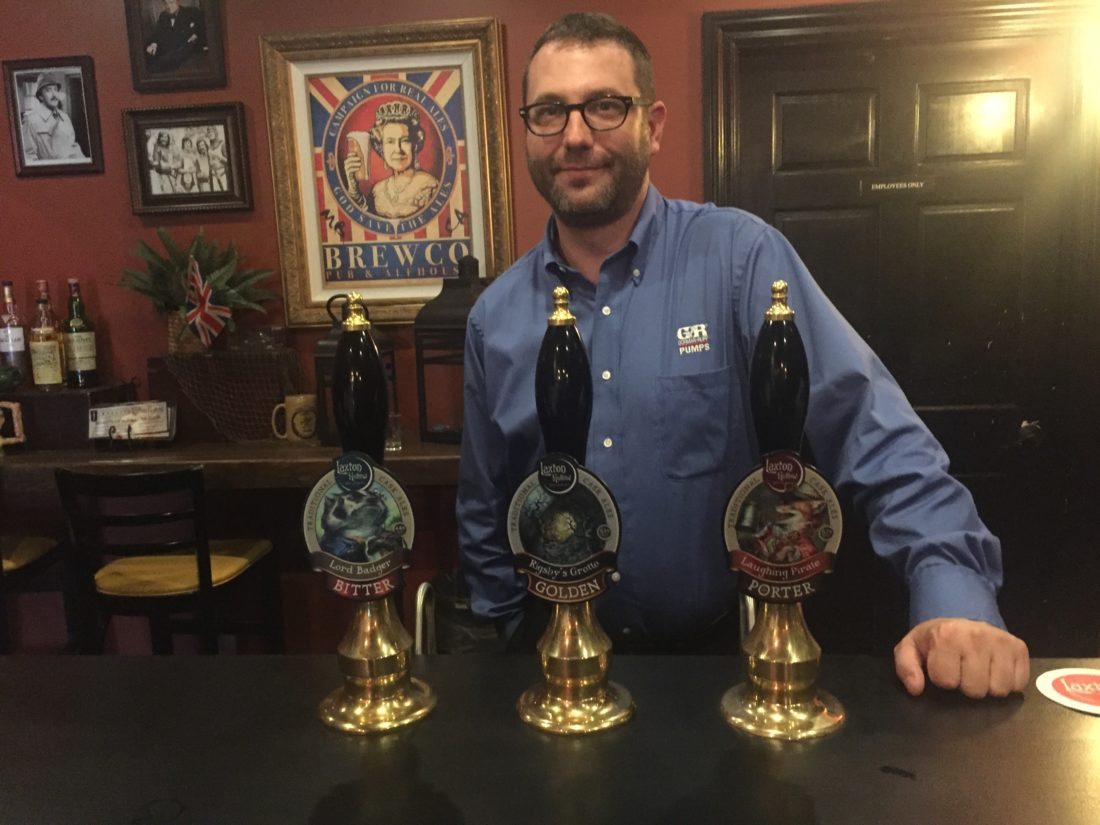
DUDLEY
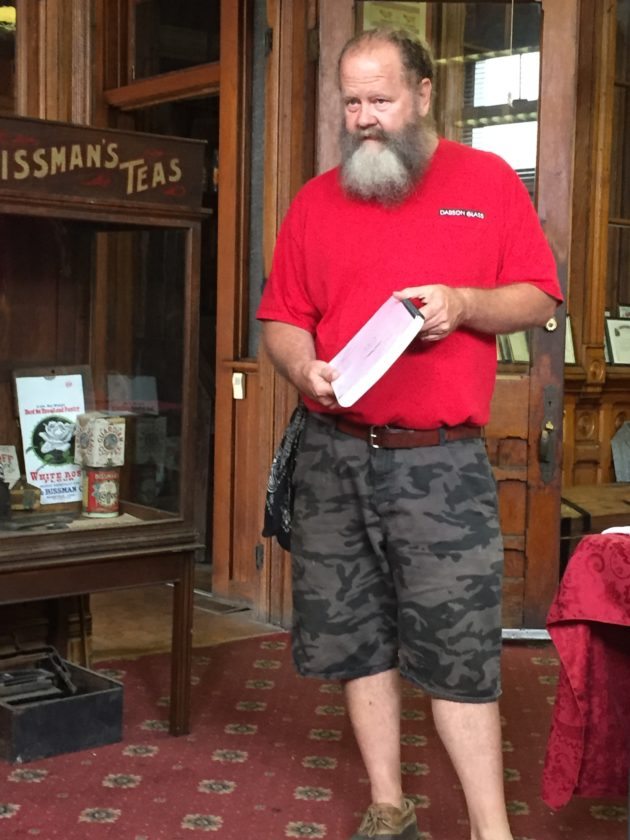
BISSMAN
Ken Dudley has created Laxton Hollow Brewing Works, which opened in June.
Laxton Hollow in Lexington, Ohio, brews cask beer, “real American ale,” and is only one of seven or eight in the country. Laxton Hollow is the latest to open.
Right now, he has three beers on tap — Lord Badger Bitter, Rigsby’s Grotto Golden Ale and Laughing Pirate Porter — all made in a tiny, 280-square-foot brewery.
Dudley said he became a “big fan of traditional cask-conditioned beers when I lived in London as a student and have been a home brewer for over 20 years. I got frustrated trying to find hand-pulled cask ales that were like the ones I enjoyed in England and began brewing beer more intensely with a friend about eight years ago with the goal of developing recipes for a cask brewery. It’s fun to see people experiencing this type of beer without having to get on an airplane.”
He learned the craft through reading and “a lot of trial and error,” as well as talking with a brewer from the Wychwood brewery in the United Kingdom. “That brewery is largely the inspiration for how I do things.”
Traditional cask beer is fermented twice — once at the brewery and once in the cask. It’s naturally conditioned, using no extraneous CO2. It’s got less alcohol and should be drunk at 52 degrees. “It’s a living beer,” he said. “It’s more like a wine, as it changes in the cask.”
It takes three times the amount of time to make cask beer, and it must be served eight or nine times faster than regular beer, he explained.
The brewery is under the same roof as the Happy Grape Wine Bar and Wine Shop, which, coincidentally is owned by Paul Smith, whom we met at the prison.
The Happy Grape has been growing for six years, after “a bunch of people with no money and a vision” came up with it, Smith said.
Then “someone sent Ken to me. I love the unique and the odd. … He’s a super talented guy.”
The brewery is “still developing,” Smith said. “He’s trying to do it the right way. … He’s in there with his tubes and beakers … he’s a scientist.
“You believe in what you’re doing and everything falls into place,” Smith said.
While that’s not a line spoken by a character in “The Shawshank Redemption,” it just might as well be the catch phrase of these hard-working, inspiring Mansfield-area characters.
I hope I get back to visit them soon. If you go, please tell them all I said “hi!”

